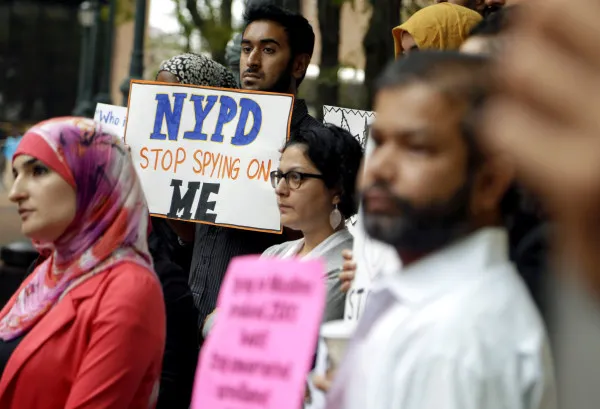Table of Contents
 Over the past ten years, the New York Police Department has looked at census data to map concentrations of ethnic Albanians in New York City. After determining which neighborhoods had the highest concentrations, fieldwork was done to categorize the major Albanian “areas of concern.” These areas correlated to high population density, residential and commercial establishment, and mosque location. Out of the five boroughs in New York, the Bronx had the most areas of concern: 23.
Over the past ten years, the New York Police Department has looked at census data to map concentrations of ethnic Albanians in New York City. After determining which neighborhoods had the highest concentrations, fieldwork was done to categorize the major Albanian “areas of concern.” These areas correlated to high population density, residential and commercial establishment, and mosque location. Out of the five boroughs in New York, the Bronx had the most areas of concern: 23.
All of this information was compiled into a report that included pictures, addresses, and short descriptions of the locations. The top and bottom of every page was carefully marked with the bolded word “secret”. In 2011, the Associated Press began a Pulitzer-Prize winning investigation that exposed many of these documents. The report revealed that the NYPD had infiltrated mosques, political groups, and student groups in selected neighborhoods. This plainclothes detective squad was referred to as the Demographics Unit, and it was created in the aftermath of September 11 in the name of preventing terrorism.
On Tuesday, April 15, the New York Police Department announced that this program that spied on Muslims would be ending. For the new commissioner, William J. Bratton, this is the first sign that police intelligence-gathering methods within communities are beginning to change. Muslim and civil rights groups have criticized the program since the Associated Press exposed it in 2011. Questions regarding its legality have been hotly contested.
After September 11, 2001, the CIA helped the New York Police Department develop the Demographics Unit. Starting in 2003, the NYPD employed covert investigations to obtain information on Muslim residents of New York. Muslim communities both inside and outside of the city were extensively mapped. Undercover police officers talked with local Muslim business owners about their opinion of the U.S. government in attempts to determine terrorist-breeding locations. Other officers eavesdropped on conversations between individuals in traditional Muslim clothing, following them and mapping out their daily routines. Still others infiltrated Muslim student groups on college campuses.
Although a federal judge recently ruled that Muslims could not prove they were harmed by this type of surveillance, the Federal Bureau of Investigation (FBI) does not permit this type of intelligence-gathering. Eavesdropping on or documenting conspicuous conversations for FBI-related investigations was determined to be a violation of the first amendment. Therefore, the practices of the Demographics Unit produces evidence that cannot be used to aid any FBI leads, although the unit itself has not been deemed guilty of violating the Constitution.
The Demographics Unit has created plenty of controversy. On the one hand, having a database about information on certain communities can be helpful in pursuing leads or narrowing down prospective terrorist locations. According to the statement released by the department after the announcement of its closure, “Understanding certain local demographics can be a useful factor when assessing information regarding potential threats coming to the attention of the New York City Police Department.” However, the methodology employed by the NYPD’s Demographics Unit has been accused of being unnecessarily intrusive and unhealthy for the environment of Muslims in New York City.
The NYPD recognizes that it does not currently have the trust of these minority groups. “It has been determined that much of the same information previously gathered by the Zone Assessment Unit [also known as the Demographics Unit] may be obtained through direct outreach by the NYPD to the communities concerned,” claimed Commissioner Bratton.
Supporters have found it difficult to argue in favor of the program after the department admitted in June 2012 that none of the information obtained through the Demographics Unit has ever generated a lead. Defenders point out that in 1985, a decree prohibited the police from investigation political and religious organizations unless there was a direct link to a crime that had been or was about to be committed. In 2003, however, the courts amended the decree to include certain guidelines determined by the NYPD. Since then, there has been a significant debate over whether or not the Demographics Unit has operated within these boundaries.
Although Commissioner Bratton has expressed his desire to heal the schism between the NYPD and minority communities, Muslim community leaders remain skeptical. They are not looking for a simple name change, but an structural transition away from current surveillance methods. The department will have to figure out what to do with the documents, and determine if the information should be destroyed or not. The exposed NYPD is treading carefully on the fine line between security interests and privacy.





